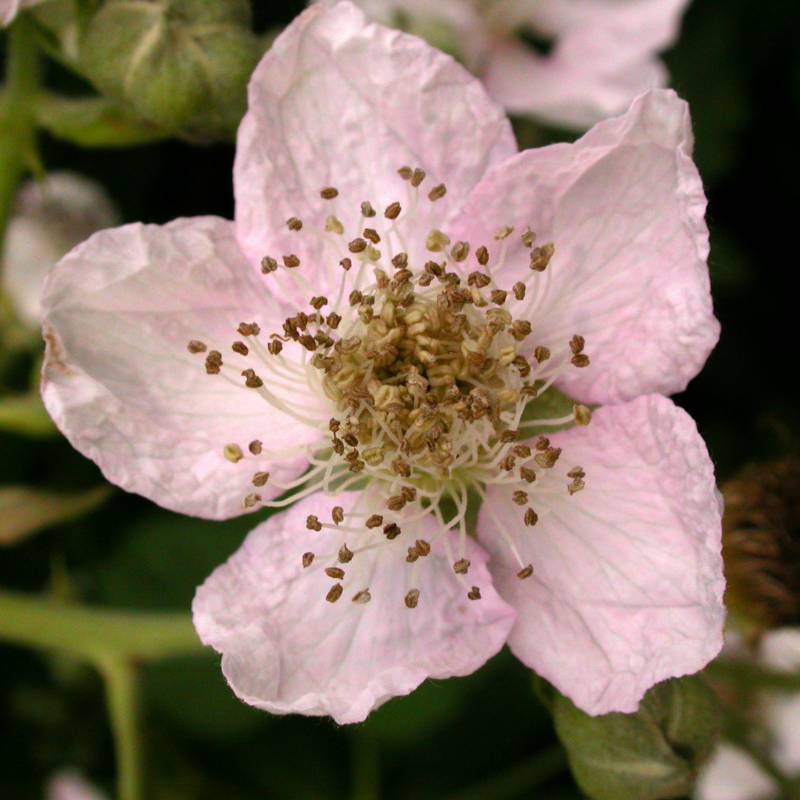Hosted by the University of Washington Herbarium, Burke Museum
Publication: Steiermark. Z. 3: 163. 1821.
Origin: Introduced from Eurasia
selected vouchers: WTU
Notes: FNA9: "Rubus bifrons lacks the strongly pruinose stems of the related R. ulmifolius, and has leaves that are usually much larger. It also lacks the stipitate-glandular trichomes and nearly round primocane terminal leaflets of the related R. vestitus. It also often has much broader inflorescences than either of the other two introduced species.
This species, like its relatives Rubus ulmifolius and R. vestitus, can have extremely long floricane branches, sometimes in excess of 1 m, that end in flowering cymes, often appearing as if primocanes apically terminate their growth by flowering within the same year. As a result, the apical portion of long floricane branches are almost always represented in herbarium specimens, but that of true primocanes, or that of full floricanes including the adjacent portion of primocanes, are rare.
L. H. Bailey (1945), M. L. Fernald (1950), Y. Helsop-Harrison (1968), and H. A. Gleason and A. Cronquist (1991) distinguished between Rubus bifrons and another species (referred to either as R. discolor or R. procerus, both often considered synonyms of R. armeniacus), variously based upon stem shape and pubescence, prickle shape and angle, leaf shape and margins, inflorescence shape, and petal color. Plants in North America identified either as R. bifrons or the other species can have considerable variation in any of these features, even within individual stems, making it impossible to distinguish between these species.
Although Rubus discolor often has been treated as a synonym of R. armeniacus in our region, it is actually a synonym of R. ulmifolius (H. E. Weber 1985).
Although widespread in North America, plants of this species complex are most abundant from northern California northward to British Columbia (particularly coastal areas), where it is a problematic weed. Along the West Coast this species can grow in great density over large areas, often to the exclusion of all other vegetation. The fruit is desirably edible and the floral displays can be attractive."
References: (none)

